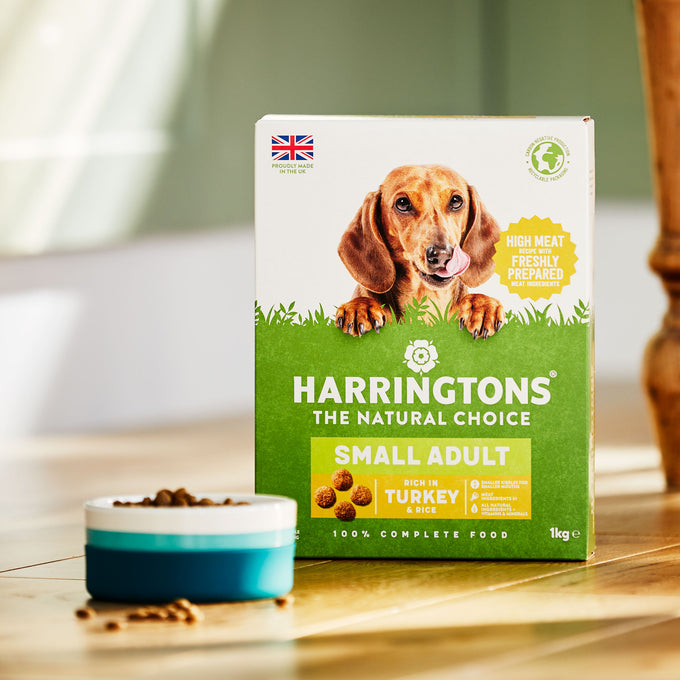In Part 1, we guided existing dog owners through preparing for a new puppy. Here, we look at the introduction itself.
Puppy’s first hours
Give existing dogs a good walk and lots of chews. Put them in a separate room they’re used to relaxing in, with a new chew.
Your puppy will likely need the toilet on arrival, so go to the garden and offer praise. Bring them in, show them where the water bowl is and let them explore in their own time, watching from a distance. Next, they may need feeding (depending on the time of day) so feed them in the area you’ve created for them, take one more toilet trip and place them back in the area.
They will hopefully now rest. Ignore any brief crying, but if crying or panicking lasts more than a few minutes, take them out to toilet again then place them back in their area. Once asleep, let your adult dogs out for the toilet, or get someone to walk them or play in the garden. Put them away again with more chews. Don’t let them near the puppy, even in passing.
When your puppy wakes, make another toilet trip, let them explore again and try playing with a toy. Introduce smaller pets if they’re willing, using short interactions with lots of puppy rewards. Now, after one last toilet trip and sleep, it’s time to introduce the dogs.
Setting things up
Your puppy should be in its area, separated by a barrier all the dogs can see through. A divided garden is OK, if it’s dry and not too windy. If inside the pen is the only option, only let your adult dog access one side of the pen and ensure the puppy has room to get away. If a doorway is the only option, the ‘Wait’ training covered in Part 1 will be useful. Wherever you choose, all dogs should have lots of space to back off.
Take this process at each dog’s pace and stay with the adult dog at all times. Have lots of treats handy for pup and adult, and some in your hand when letting the adult into the room to keep their interest on you. For impulsive or over-friendly dogs, perhaps start with a lead.
If you have multiple dogs, introduce one at a time, starting with the calmest or smallest. If one happens to be the same breed as the puppy, introduce them first.
The introduction
Keep interactions to two-three minutes, or less for nervous puppies or highly excitable dogs. If they sniff each other between the bars, call the adult away after five seconds and reward, then allow to return.
If puppy gets scared and runs from the barrier, let it. Ask the adult to ‘sit’ or ‘down’ facing away from the barrier, using lots of treats if they’re excited. If puppy re-approaches, verbally praise and throw a treat past it so it has to retreat and return. Repeat a few times, then let the adult turn around calmly. Depending on the puppy’s reaction, repeat the above stages appropriately.
Once your puppy is relaxed, happy and interested, and the adult is calm and/or focused on you, open the barrier. Look for tail wagging, whose meaning differs between breeds (e.g. a Labrador’s steady wag is happy, but a stiff wag with low or high tail can mean uncertainty, arousal or potential threat). If there’s any play, pushiness, growling or barking, separate them and try again later.
If all goes well, progress to meetings without the barrier for a couple of minutes each time. Try introductions with multiple dogs, ideally no more than two adults at once.
If it hasn’t gone so well, don’t panic. Try a few hours later or the next day, until you see positive signs from all the dogs. Keep them separate during this time, with plenty of quality time with you and the family. As you bond with your puppy, the increasing trust should help the introduction.
Next steps
Once you’ve introduced each dog successfully (without the barrier, and at least in twos if you have multiple dogs) you can move to the next step. It’s now OK to have the puppy in its pen with the other dogs are milling around outside it.
Only let your puppy loose with them when you can watch it closely. If you have a big, bouncy dog, perhaps keep them on lead when the puppy is loose to avoid them hurting it. If your puppy bites the older dog, scatter treats and toys to distract them before it escalates.
Lastly, take a moment to pat yourself on the back for getting here. The first 24 – 72 hours are always the hardest.

